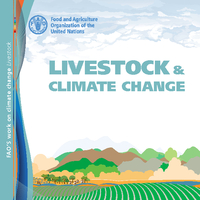November 28, 2016
Published by BC3Research Agustín del Prado at November 28, 2016
Categories
Smallholder livestock keepers, fisherfolks and pastoralists are among the most vulnerable to climate change. Climate change impact livestock directly (for example through heat stress and increased morbidity and mortality) and indirectly(for example through quality and availability of feed and forages, and animal diseases). At the same time, the livestock sector contributes significantly to climate change. In fact, 14.5 percent of all human-caused greenhouse gas (GHG) emissions come from livestock supply chains. It amounts to 7.1 gigatonnes (GT) of carbon dioxide equivalent (CO2-eq) per year.
June 11, 2019
Published by BC3Research at June 11, 2019
The materials presented in this product seek to provide information on the Katowice Climate Package, agreed during the Katowice Climate Conference held in 2018. Specifically, it contains information on the decisions related to the modalities, procedures and guidelines for the transparency framework for action and support to facilitate understanding of the Parties’ communication and reporting obligations under the Paris Agreement, as well as the process to track progress implementation of NDC commitments. This material seeks to serve as a resource for developing countries for the update, review and communication of NDCs, as well as for the reporting and accounting of their NDC commitments.
Do you like it?


